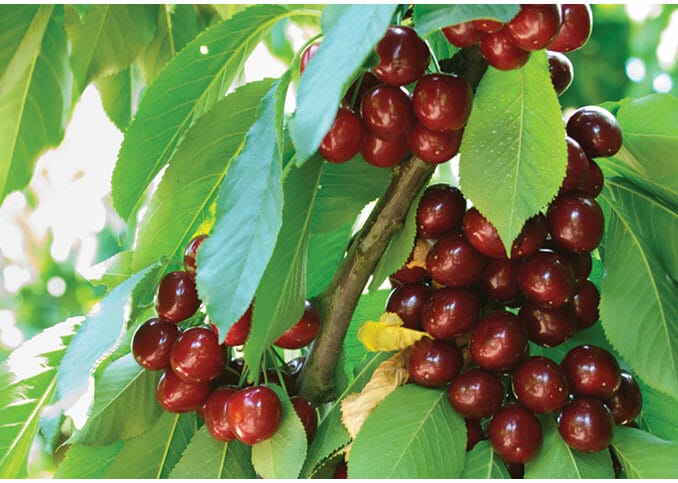About Cherry Farming:
- Cherries are delicious and nutritious fruits that belong to the genus Prunus.
- It is a delicate crop and extremely sensitive to extreme weather conditions.
- Having a very low shelf life, cherries cannot sustain heavy rains or high temperatures.
- The Kashmir Valley contributes to 95 per cent of the total cherry production in India.
- Eight cherry varieties grown in Kashmir include makhmali, siya, mishri, jaddi, Italy, dabal, vishkan and stela.
- Climate:
- It requires cool weather conditions with temperatures ranging between 15°C to 25°C during the growing season.
- They also require a period of winter dormancy with temperatures below 7°C to induce flowering.
- Soil: The soil should be well-draining, rich in organic matter, and have a pH between 6.0 to 7.5.
- Planting: Cherry trees can be propagated by grafting onto rootstocks. The ideal time for planting is during the winter months from December to February.
- Intercropping: Some suitable intercropping crops for cherry cultivation in India include legumes, such as peas and beans, and leafy vegetables, such as spinach and lettuce.
- Fertilization: Fertilizers rich in nitrogen, phosphorus, and potassium should be applied in adequate amounts to promote healthy growth and fruit development.
- Harvesting: Cherries can be harvested when they reach maturity, usually in late May to early June.
- Area of Cultivation: They are primarily grown in the northern regions of India, particularly in the states of Jammu and Kashmir, Himachal Pradesh, and Uttarakhand.
Q1) What is nitrogen cycle?
The nitrogen cycle is a series of interconnected processes that involve the transformation of nitrogen through the biosphere, lithosphere, and hydrosphere. It includes processes like nitrogen fixation, nitrification, denitrification, and assimilation.
Source: Wettest May-June in decade hits Kashmir’s cherry growers hard
Last updated on November, 2025
→ Check out the latest UPSC Syllabus 2026 here.
→ Join Vajiram & Ravi’s Interview Guidance Programme for expert help to crack your final UPSC stage.
→ UPSC Mains Result 2025 is now out.
→ UPSC Notification 2026 is scheduled to be released on January 14, 2026.
→ UPSC Calendar 2026 is released on 15th May, 2025.
→ The UPSC Vacancy 2025 were released 1129, out of which 979 were for UPSC CSE and remaining 150 are for UPSC IFoS.
→ UPSC Prelims 2026 will be conducted on 24th May, 2026 & UPSC Mains 2026 will be conducted on 21st August 2026.
→ The UPSC Selection Process is of 3 stages-Prelims, Mains and Interview.
→ UPSC Result 2024 is released with latest UPSC Marksheet 2024. Check Now!
→ UPSC Prelims Result 2025 is out now for the CSE held on 25 May 2025.
→ UPSC Toppers List 2024 is released now. Shakti Dubey is UPSC AIR 1 2024 Topper.
→ UPSC Prelims Question Paper 2025 and Unofficial Prelims Answer Key 2025 are available now.
→ UPSC Mains Question Paper 2025 is out for Essay, GS 1, 2, 3 & GS 4.
→ UPSC Mains Indian Language Question Paper 2025 is now out.
→ UPSC Mains Optional Question Paper 2025 is now out.
→ Also check Best IAS Coaching in Delhi

















